 W
WA series of riots in Dublin on 25 February 2006 was precipitated by a controversial proposed march down O'Connell Street of a unionist demonstration. The disturbances began when members of the Garda Síochána attempted to disperse a group of counter-demonstrators blocking the route of the proposed march. The situation escalated as local youths joined forces with the counter-demonstrators.
 W
WThe 2010 student protest in Dublin was a demonstration that took place in the centre of the city on 3 November 2010 in opposition to a proposed increase in university registration fees, further cuts to the student maintenance grant and increasing graduate unemployment and emigration levels caused by the 28th Government of Ireland.
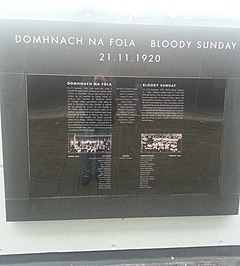 W
WBloody Sunday was a day of violence in Dublin on 21 November 1920, during the Irish War of Independence. More than 30 people were killed or fatally wounded.
 W
WThe Cartography of Dublin is the history of surveying and creation of maps of the city of Dublin. The following is a list of notable historical maps of Dublin City and County Dublin, Ireland.
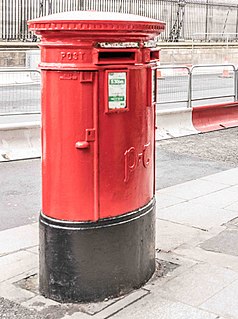 W
WThe centenary of the Easter Rising occurred in 2016. Many events occurred to mark the occasion. Note that Easter Day fell on 27 March in 2016 and on 23 April in 1916. The Rising began on Easter Monday, 24 April 1916.
 W
WDublin City Council is the authority responsible for local government in the city of Dublin in Ireland. As a city council, it is governed by the Local Government Act 2001. Until 2001, the council was known as "Dublin Corporation". The council is responsible for housing and community, roads and transportation, urban planning and development, amenity and culture and environment. The council has 63 elected members and is the largest local council in Ireland. Elections are held every five years and are by single transferable vote. The head of the council has the honorific title of Lord Mayor. The city administration is headed by a Chief Executive, Owen Keegan. The council meets at City Hall, Dublin.
 W
WClanbrassil Street is a street in Dublin south of the city centre. It runs from Robert Emmet Bridge on the Grand Canal to New Street. It is served by several bus routes. It is divided into Clanbrassil Street Upper and Clanbrassil Street Lower.
 W
WThe Coombe is a historic street in the south inner city of Dublin, Ireland. It was originally a hollow or valley where a tributary of the River Poddle, the Coombe Stream or Commons Water, ran. The name is sometimes used for the broader area around, in which the Poddle and its related watercourses featured strongly.
 W
WThe Cork Street Fever Hospital, also known as the House of Recovery, was a hospital located in Cork Street in Dublin, Ireland.
 W
WCork Street runs from the junction of The Coombe to Donore Avenue.
 W
WOn 25 May 1921, during the Irish War of Independence, the Custom House in Dublin was occupied and then burnt in an operation by the Irish Republican Army (IRA). The Custom House was the headquarters of the Local Government Board for Ireland, an agency of the British administration in Ireland, against which the IRA was fighting in the name of the self-proclaimed Irish Republic. The operation, involving over 100 IRA volunteers, was a propaganda coup for the republicans but a military disaster for the IRA in the Irish capital. A force of British Auxiliaries quickly arrived and a gun battle erupted. Five IRA volunteers were killed, along with three civilians, and about 80 volunteers were captured.
 W
WDame Lane is a narrow thoroughfare in Dublin, Ireland, with a variety of historical and literary associations.
 W
WThe De Meones family were an Anglo-Irish family who originated in Hampshire. They moved to Ireland in the thirteenth century, became substantial landowners in Dublin, and gave their name to the suburb of Rathmines.
 W
WThe Deanery of St Patrick was one of several manors, or liberties, that existed in Dublin, Ireland since the arrival of the Anglo-Normans in the 12th century. They were town lands united to the city, but still preserving their own jurisdiction. The Lord of the Manor was the Dean of St Patrick's Cathedral, Dublin. In the 19th century it was the smallest of the liberties of Dublin.
 W
WDonnybrook Fair was a fair that was held in Donnybrook, Dublin, from the 13th century until the 1850s. It has given its name to an Irish jig, an upscale supermarket chain, a broadsheet ballad, and is a slang term for a brawl or riot.
 W
WDublin Corporation, known by generations of Dubliners simply as The Corpo, is the former name given to the city government and its administrative organisation in Dublin between 1661 and 1 January 2002. It is now known as Dublin City Council.
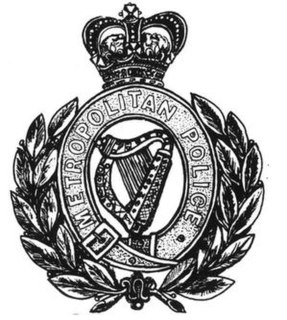 W
WThe Dublin Metropolitan Police (DMP) was the police force of Dublin, Ireland, from 1836 to 1925, when it was amalgamated into the new Garda Síochána.
 W
WThe Lord Mayor of Dublin is the honorary title of the chairman of Dublin City Council which is the local government body for the city of Dublin, the capital of Ireland. The incumbent is councillor Hazel Chu. The office holder is elected annually by the members of the Council.
 W
WThe Siege of Dublin took place in 1649 during the Irish Confederate Wars. It was a failed attempt by combined Irish Royalist and Confederate forces to capture the capital of Dublin which was held by English Republican forces under Michael Jones. It was part of a strategy by Duke of Ormonde, head of an alliance loyal to Charles II, to seize the remaining foothold of Ireland still under the control of the London Parliament.
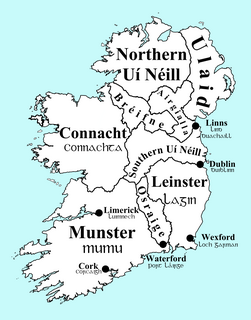 W
WThe First Viking Age in Ireland began in 795, when Vikings began carrying out hit-and-run raids on Gaelic Irish coastal settlements. Over the following decades the raiding parties became bigger and better organized; inland settlements were targeted as well as coastal ones; and the raiders built naval encampments known as longphorts to allow them to remain in Ireland throughout the winter. In the mid 9th century, Viking leader Turgeis or Thorgest founded a stronghold at Dublin, plundered Leinster and Meath, and raided other parts of Ireland. He was killed by the High King, Máel Sechnaill mac Máele Ruanaid, which was followed by several Irish victories against the Vikings and the seizure of Dublin in 849. Shortly after, a new group of Vikings known as the Dubgaill came to Ireland and clashed with the earlier Viking settlers, now called the Finngaill. The wavering fortunes of these three groups and their shifting alliances, together with the shortcomings of contemporary records and the inaccuracy of later accounts, make this period one of the most complicated and least understood in the fledgling city's history. In 853 a Viking warlord called Amlaíb arrived and made himself king of Dublin. He ruled along with his brothers Ímar and Auisle (Ásl). For the next fifteen years or so, they used Dublin as their base for a series of campaigns against Irish kingdoms. During these conflicts they briefly allied themselves with several Irish kings. The Dublin Vikings also carried out a number of raids in Great Britain at this time. The deaths of Ivar (c.873) and Olaf (c.874) were followed by internecine conflict among the Vikings. Although intermittent warfare between the Vikings and the Irish continued, these inner conflicts weakened the Viking colonies and made it easier for the Irish to unite against them. In 902, Cerball mac Muirecáin, king of Leinster, and Máel Findia mac Flannacáin, king of Brega, launched a two-pronged attack on Dublin and drove the Vikings from the city. However, in 914 the Vikings now known as the Uí Ímair would return to Ireland, marking the beginning of the Second Viking Age.
 W
WThe Equestrian statue of George I, by John van Nost the Elder, is a statue that stands outside the Barber Institute of Fine Arts in Birmingham, England.
 W
WThe Four Courts Marshalsea was a prison in Dublin, Ireland until 1874. The keeper of the prison was the Marshal of the Four Courts, a role filled after 1546 by the Constable of Dublin Castle.
 W
WFumbally Lane is a narrow and historic street in Dublin, Ireland, south of the city centre in The Liberties, 'In name and character perhaps the most evocative of all the Liberties' streets.' It connects Blackpitts to New Street and is close to St Patrick’s Cathedral.
 W
WGrange Abbey is a ruined chapel on the former Grange of Baldoyle lands, in the townland of Baldoyle, now in Donaghmede, at the northern edge of Dublin, Ireland.
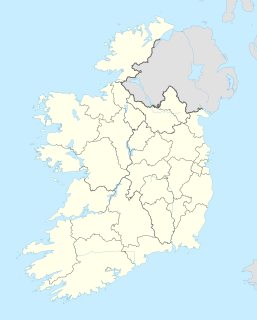 W
WGrangegorman is an inner suburb on the northside of Dublin city, Ireland. The area is administered by Dublin City Council. It was best known for decades as the location of St Brendan's Hospital, which was the main psychiatric hospital serving the greater Dublin region. As of 2020, the area is the subject of a major redevelopment plan, running for more than a decade, under the aegis of the Grangegorman Development Agency, including the new Technological University Dublin campus.
 W
WThe Irish International Exhibition was a world's fair held in Dublin, Ireland, in 1907, when the country was still part of the United Kingdom.
 W
WThe Liberty of Thomas Court and Donore was one of several manors, or liberties, that existed in County Dublin, Ireland since the arrival of the Anglo-Normans in the 12th century. They were adjacent to Dublin city, and later entirely surrounded by it, but still preserving their own separate jurisdiction.
 W
WThe Library of Trinity College Dublin serves Trinity College and the University of Dublin. It is a legal deposit or "copyright library", which means that publishers in Ireland must deposit a copy of all their publications there, free of charge. It is also the only Irish library to hold such rights for works published in the United Kingdom. The Library is the permanent home to the Brian Boru harp which is a national symbol of Ireland, a copy of 1916 Proclamation of the Irish Republic, and the Book of Kells. Two of the four volumes of the Book of Kells are on public display, one opened to a major decorated page and the other to a typical page of text. The volumes and pages shown are regularly changed. Members of the University of Dublin also have access to the libraries of Tallaght University Hospital and the Irish School of Ecumenics, Milltown.
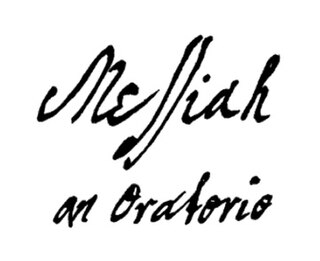 W
WMessiah is an English-language oratorio composed in 1741 by George Frideric Handel, with a scriptural text compiled by Charles Jennens from the King James Bible, and from the Coverdale Psalter, the version of the Psalms included with the Book of Common Prayer. It was first performed in Dublin on 13 April 1742 and received its London premiere nearly a year later. After an initially modest public reception, the oratorio gained in popularity, eventually becoming one of the best-known and most frequently performed choral works in Western music.
 W
WNelson's Pillar was a large granite column capped by a statue of Horatio Nelson, built in the centre of what was then Sackville Street in Dublin, Ireland. Completed in 1809 when Ireland was part of the United Kingdom, it survived until March 1966, when it was severely damaged by explosives planted by Irish republicans. Its remnants were later destroyed by the Irish Army.
 W
WThe Noyeks fire was a fatal fire that took place at the Noyeks timber factory on Parnell St, Dublin, Ireland on March 27, 1972, and claimed the lives of 8 people; seven women and one man who died in the inferno.
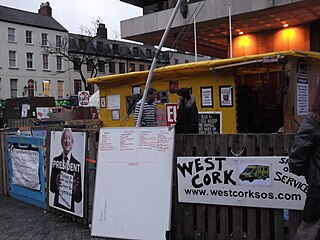 W
WOccupy Dame Street (ODS) or Occupy Dublin was a peaceful protest and demonstration against economic inequality, social injustice and corporate greed taking place outside the Central Bank of Ireland plaza on Dame Street in Dublin, beside the Temple Bar area of the city. Part of the global Occupy movement, it took its name from the Occupy Wall Street demonstration in New York City's Wall Street financial district. Occupy Dame Street had four requests: the withdrawal of the EU/IMF from Ireland, an end to public ownership of private debt, the return to public ownership of Ireland's privatised oil and gas reserves, and the implementation of what the movement describes as "real participatory democracy". The national police force, Garda Síochána, dismantled their camp during a late-night raid on 8 March 2012. The protesters vowed to fight on. Some were never heard of again, while others found other channels of protest. The most detailed account and analysis of events was written by Helena Sheehan.
 W
WOxmantown was a suburb on the opposite bank of the Liffey from Dublin, in what is now the city's Northside. It was founded in the 12th century by Vikings or "Ostmen" who had migrated out of Dublin after the arrival of the English, and was originally known as Ostmanby or Ostmantown. The removal of the Ostmen from Dublin is often characterised as a mass expulsion, but evidence of this is lacking. The settlement was bounded on the east by the lands of St Mary's Abbey and on the west by Oxmantown Green, an extensive common that in time was curtailed to form Smithfield Market. Oxmantown lay within the parish of St Michan's, which was the only church on the Northside until the parishes of St Mary's and St Paul's were formed in 1697 to cater to the district's burgeoning population.
 W
WRoad Records was an independent record store in Dublin, Ireland. Extensive media coverage followed its closure in January 2009 but it had relaunched by April with the support of the Irish music community. It was often used by people outside Ireland to purchase Irish music, such as The Cake Sale's charity album for Oxfam.
 W
WLinda and Charlotte Mulhall are sisters from Dublin, Ireland, known for having killed and dismembered their mother's boyfriend, Farah Swaleh Noor, in March 2005. Noor was killed with a Stanley knife wielded by Charlotte and struck with a hammer by Linda following a confrontation with the sisters and their mother, Kathleen Mulhall. His head and penis were sliced off and the rest of his corpse dismembered by the women and dumped in Dublin's Royal Canal where a piece of leg still wearing a sock was spotted floating near Croke Park ten days later.
 W
WStrumpet City is a 1969 historical novel by James Plunkett set in Dublin, Ireland, around the time of the 1913 Dublin Lock-out. In 1980, it was adapted into a successful TV drama by Hugh Leonard for RTÉ, Ireland's national broadcaster. The novel is an epic, tracing the lives of a dozen characters as they are swept up in the tumultuous events that affected Dublin between 1907 and 1914.
 W
WThomas Street is a street in The Liberties in central Dublin, Ireland.
 W
WDublin tramways was a system of trams in Dublin, Ireland which commenced line-laying in 1871, and began service in 1872, following trials in the mid-1860s. Established by a number of companies, the majority of the system was eventually operated by forms of the Dublin United Tramways Company (DUTC), dominated for many years by William Martin Murphy. Most of the services ran within the city centre and near suburbs, with the majority of major suburbs served. Additionally, there were two longer-range services, one reaching the "excursion" destination of Poulaphouca Falls, and two services concerning Howth.
 W
WWest of Grafton Street Ltd. or West Jewellers was a jewellery store which was last located on 33 Grafton Street in Dublin, Ireland before it closed in 2010. It was considered the oldest European jewellery store and one of the oldest companies in Ireland.
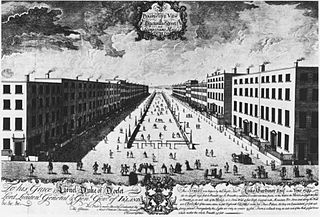 W
WThe Wide Streets Commission was established by an Act of Parliament in 1758, at the request of Dublin Corporation, as a body to govern standards on the layout of streets, bridges, buildings and other architectural considerations in Dublin. The commission was abolished by the Dublin Improvement Act of 1849, with the final meeting of the Commission taking place on 2 January 1851.